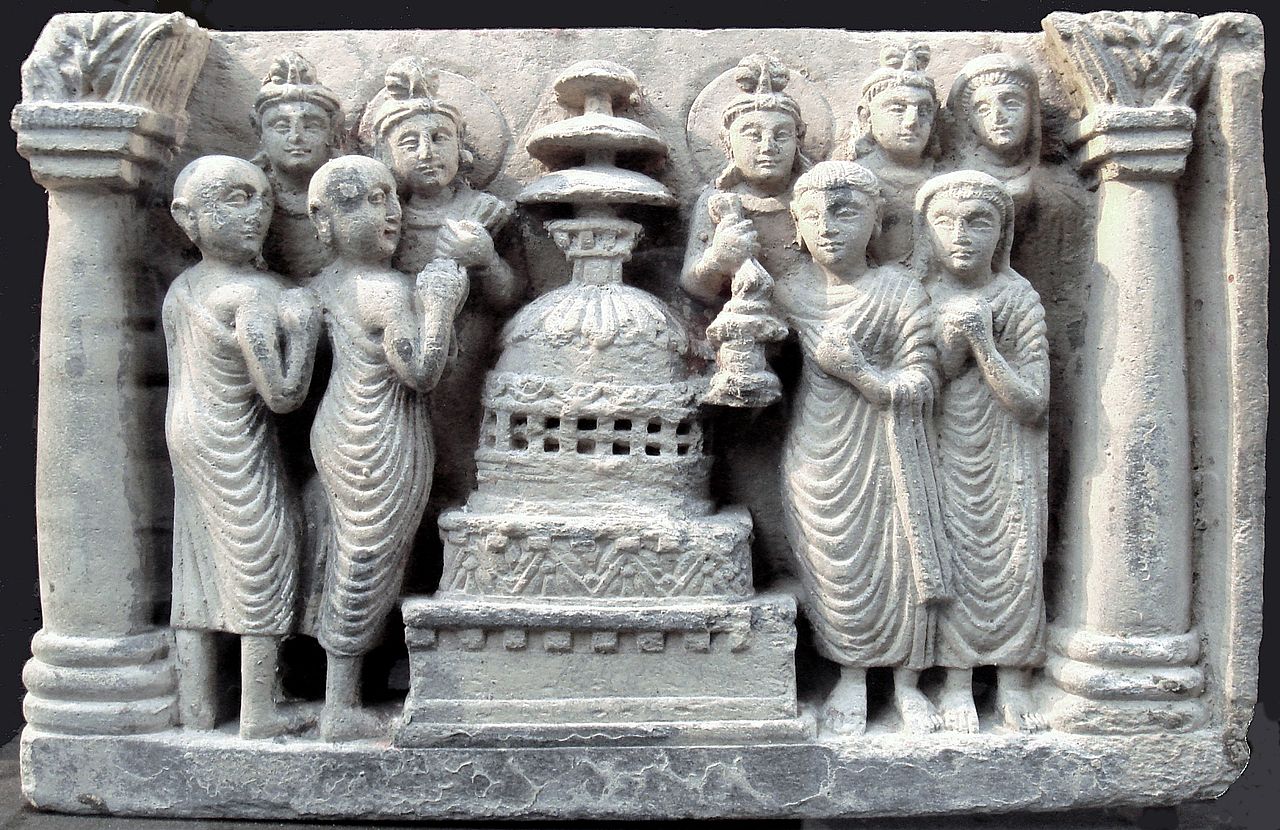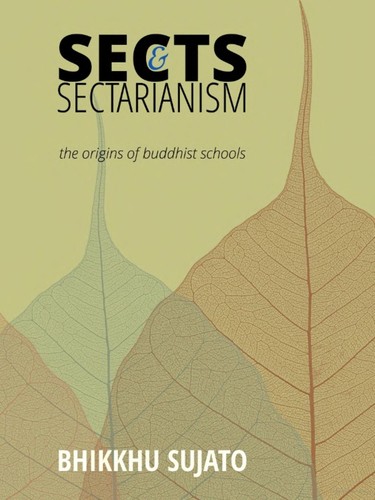Early Sects
Subscribe to this topic via: RSS
The “18” schools of Buddhism that arose in India in the centuries after King Ashoka, and their relationship to the emerging “Mahayana” movements.

An ancient relief shows two monks and a Bactrian Greek couple circumambulating a stūpa. In the background, a group of merchants looks on approvingly. As Buddhism spread across South and Inner Asia, regional differences in practices and interpretation gradually emerged, eventually leading to "18" schools. (WikiMedia Commons, CC BY-SA 2.5)
Table of Contents
Books (2)
Featured:
-
🥇 Best of
See also:
Canonical Works (4)
Featured:
-
A book in the Abhidhamma Canon explicitly dealing with the doctrinal controversies that arose between the Indian schools of Buddhism and the Theravāda.
See also:
Readings (28)
Featured:
-
⭐ Recommended
A guided reading of a small section of the Abhidhamma related to how different Indian schools explained time and a hypothesis about how they may have debated the topic amongst themselves.
-
… a third century CE inscription [is dedicated] ‘to the Theriya teachers, followers of the Vibhajjavāda, bringers of the faith to the Kashmiri, Gandhāran, Bactrian and Vanavāsan peoples and to the island of Ceylon, dwellers in the Mahāvihāra’
52 pages -
While there is a growing recognition of the importance of asceticism in Buddhism among scholars, the view that Indian Buddhist monastic communities, on the whole, should be considered non-ascetic remains largely intact. It is the goal of this chapter to challenge this heavily ingrained attitude toward asceticism in the Indian Buddhist context.
-
… the term Mūla-sarvāstivāda can serve a purpose as a designation for a specific, identifiable Āgama lineage of textual transmission
-
The article describes a set of seven silver objects – three goblets, two ladles, a bowl and a cup – bearing short dedicatory inscriptions in Kharoṣṭhī script datable to around the first century CE. The inscriptions record in the usual Gandharan fashion the donation of the utensils by a group of nuns and lay-persons, perhaps constituting a family, to a Sarvāstivādin monastery called Utarode(v)a located at an otherwise unknown place, ‘Koṇaśili.’
-
… texts achieve authority through use
-
A few pages on the early schools of Indian Buddhism and the emergence of the Mahayana.
30 pages -
Argues that the Pātimokkha ceremony as we know it today may have been a construction of the Second Council meant to tie together the dispersing and evolving monastic communities following the decline of the first generation of ‘the little Buddhas’ by codifying the ways of said elders.
-
⭐ Recommended
The Buddha’s bad karma refers to ten problematic incidents that happened in the life of the historical Buddha. […] The texts related to the bad karma of the Buddha can be divided into two groups: those texts accepting the bad karma and those rejecting the whole matter.
-
… different solutions to the Sarvāstivādin / Mūlasarvāstivādin problem: that they were two entirely separate sects, or that one was the source from which the other emerged, or that the two were different groupings within an individual sect, or even that there was only one sect known by two different terms
23 pages -
This article proposes a new reading of the mirror analogy presented in the doctrine of Chinese Yogācāra Buddhism.
-
… partisans of Mahāyāna did not reject the Śrāvaka scriptures, or even their philosophies. Mahāyānists practiced the Vinaya, often quite earnestly, and studied the Sūtras and the Abhidharma.
-
Probably, the Abhisamācārikā Dharmāḥ originally formed a part of the Vinaya of the Mahāsāṃghika-Lokottaravādins.
-
What the above-cited reports and the colophons indicate is, rather, a symbiosis of the Mahāsāṃghikas and the followers of Mahāyāna Buddhism (at least) in Pāṭaliputra. This symbiosis is illustrated clearly in the case of the aforementioned Master Mañjuśrī, who dwelt in the Devarāja Monastery, whose monks were Mahāsāṃghikas, and was revered by all the Mahāyāna monks in the country.
-
… it is improbable
-
The literature of the Pudgalavādins is almost entirely lost. Pudgalavādin communities eventually were assimilated by others, and we can learn of their position almost exclusively through the writings of their adversaries. Fortunately, we do have, in Chinese translations, four authentic works
-
… wearing only a saṃkakṣikā, because the latter appears not to cover the breasts completely, but only providing some support
-
We are thus spared the problem of guessing why all references to the stupa have gone missing from the text of the khandhaka
See also:
Audio/Video (4)
Featured:
-
Special episode i of Season 3 of The History of India Podcast is a whimsical tour of ancient Indian farmland.
-
An overview of Indian Buddhist philosophies especially as they appear to the Western philosophical tradition.
60 min
See also:

